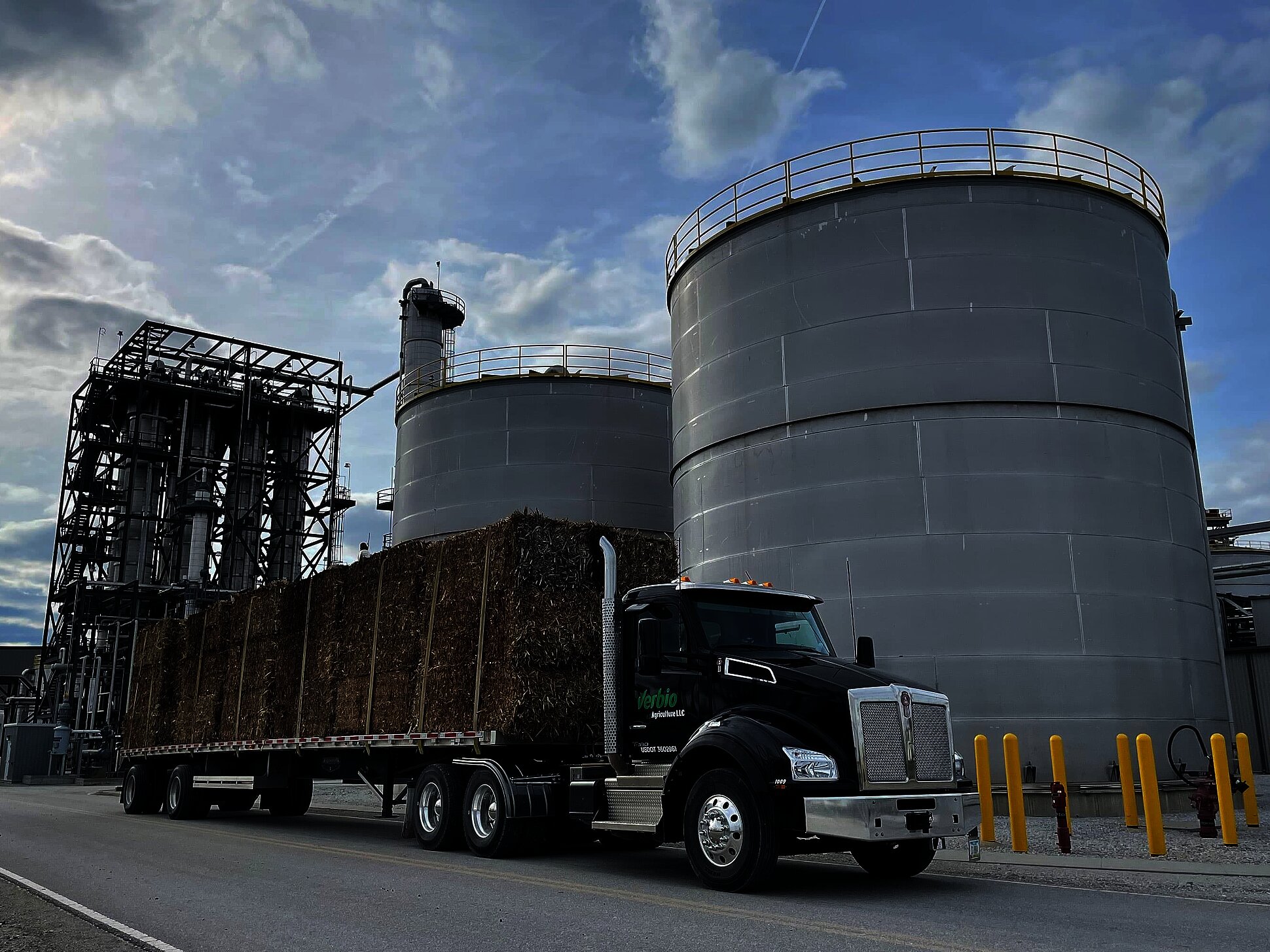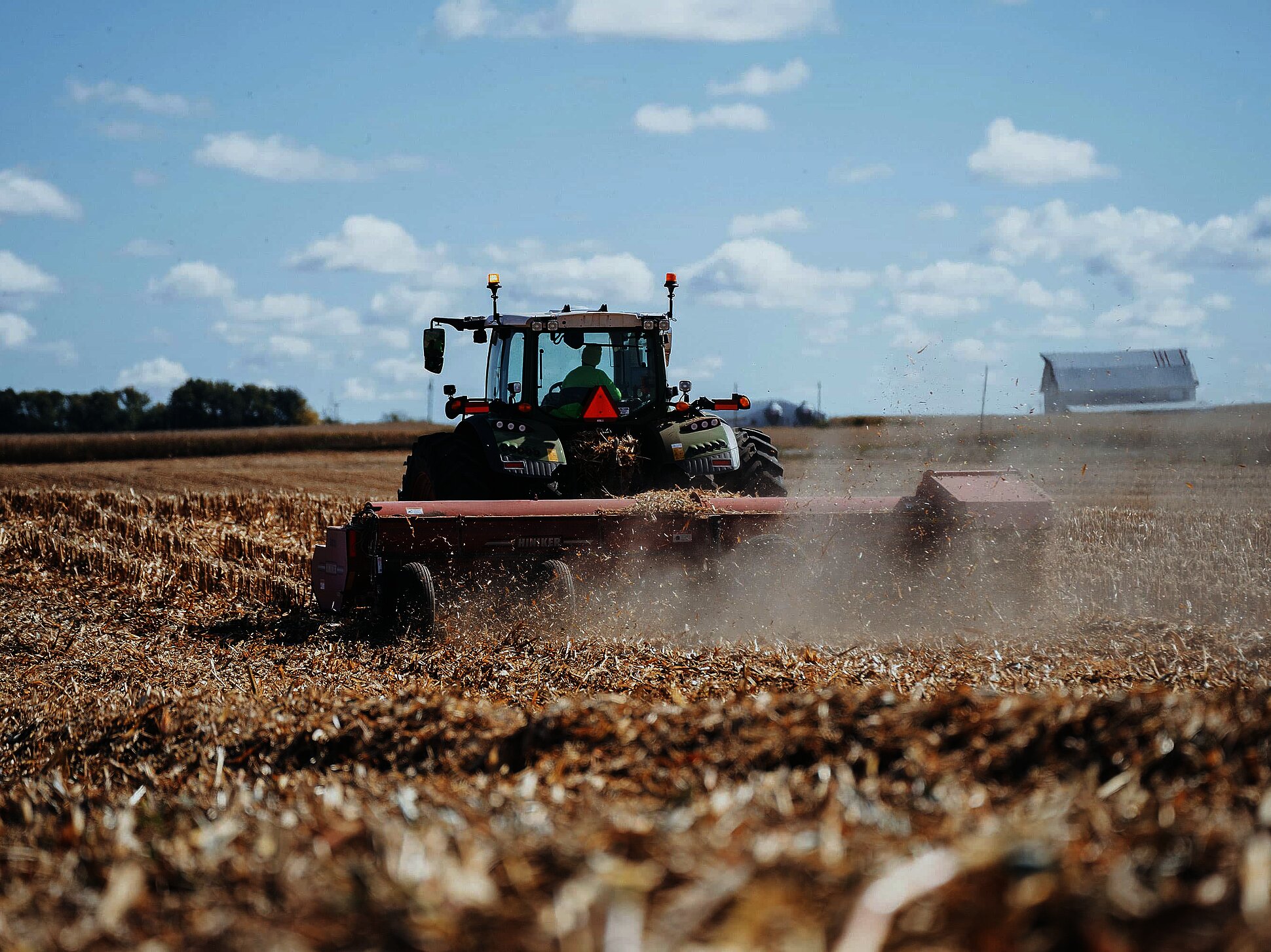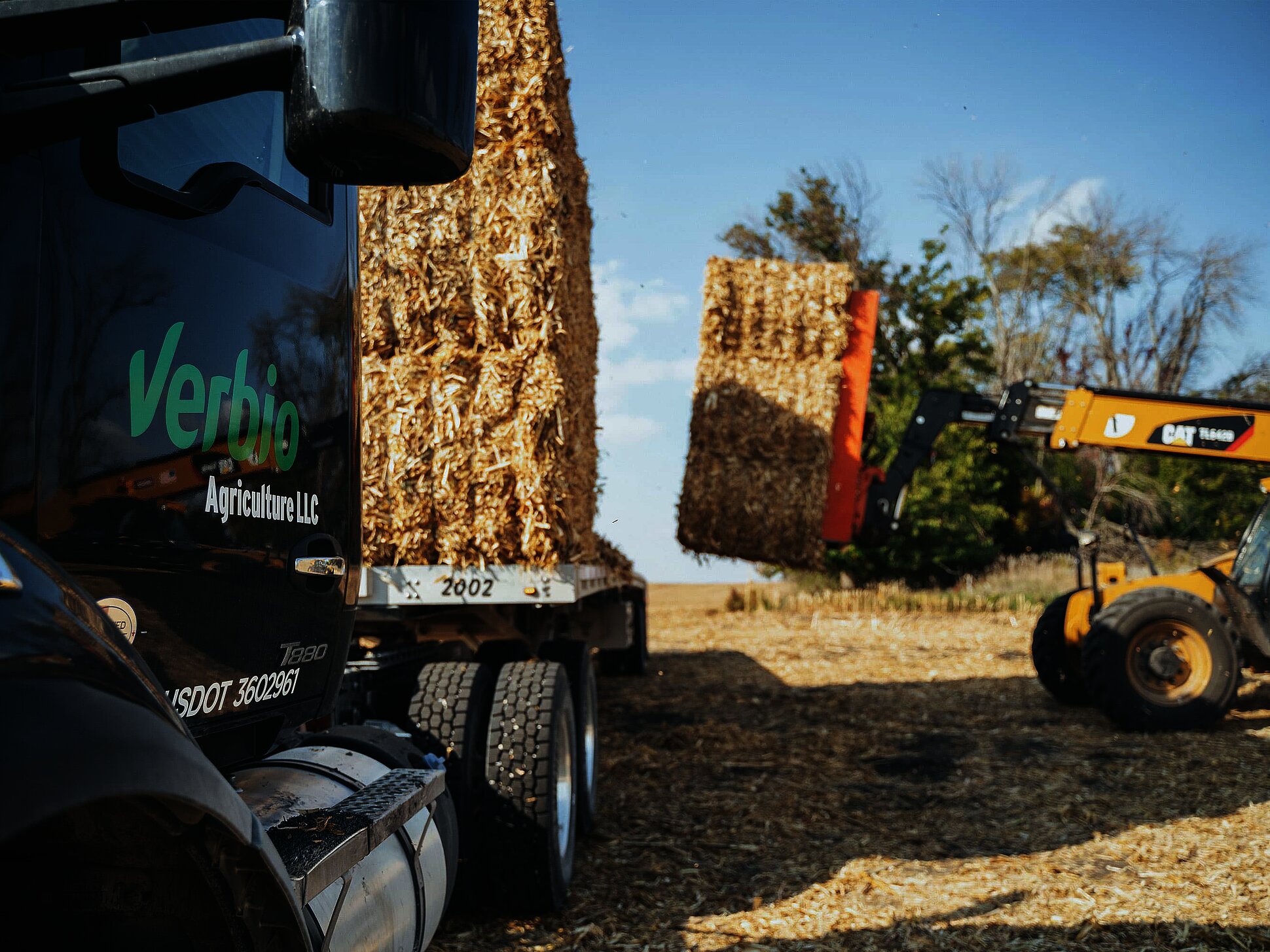We drive Climate Protection and increase Crop Yields
Our biorefinery approach transforms unused agricultural residues into renewable energy, creating value from materials that would otherwise remain in the field. By sourcing feedstocks exclusively from the surrounding region and using sustainable practices, our technology helps prevent greenhouse gas emissions that would result from natural decomposition. Regular removal and reuse of these residues can also support long-term soil health and improve overall crop productivity. By partnering up with us, local growers play a vital role in advancing sustainable agriculture and protecting the climate.

What growers need to know

The Challenge
Crop residue inputs, especially in the US Corn Belt, are higher than ever. More than 5.4 tons of residue material per acre are generated every year, creating significant agronomic and environmental challenges for corn production. In the current state of residue management, large amounts of residue decrease soil temperature, increase soil moisture, and cause nitrogen losses in the environment, such as nitrates into waterways and nitrous oxides into the atmosphere. As a result, net greenhouse gas emissions increase, nitrogen fertilizer use efficiency decreases, and crop yield is reduced.
The Solution
A study conducted on behalf of Verbio confirms how smart residue management by growers can create opportunities that help their business and the environment at the same time. Independent research teams from Iowa State University, the Universities of Illinois, Minnesota and Wisconsin-Madison, and the USDA Agricultural Research Service have gathered evidence from the north central Corn Belt. They concluded that well-planned harvest of agricultural residues can increase crop productivity, on-farm profitability, and environmental performance.

Major findings – Why growers benefit from what we do:
- Harvesting agricultural residues in continuous corn cropping systems increases grain yield of the following corn crop while reducing nitrogen fertilizer input and environmental nitrogen losses.
- Outside of unusually dry years and the dry western Corn Belt, no research was found that indicates residue harvest in continuous corn systems will increase nitrogen fertilizer inputs or decrease grain yield.
- Process model simulations demonstrate that the increases in grain yield despite reductions in optimum nitrogen fertilizer input are the result of more efficient soil nitrogen cycling and fewer nitrogen losses to the environment.
- The research results indicate that 50-66% residue harvest in continuous corn systems can reduce field-scale greenhouse gas emissions by 10-50% depending on the year and system.
- Using a case study from an Iowa State University Extension publication, we estimate a 38% reduction for central Iowa.
- Using a process model simulation, we estimate a 35% reduction for central Iowa.